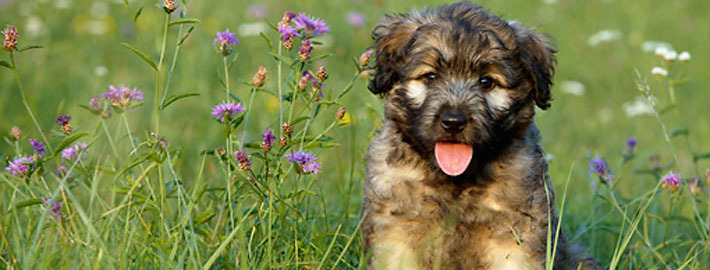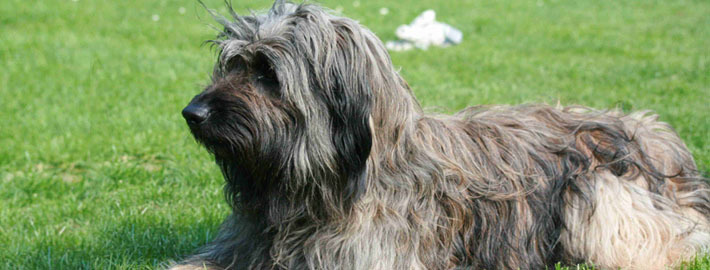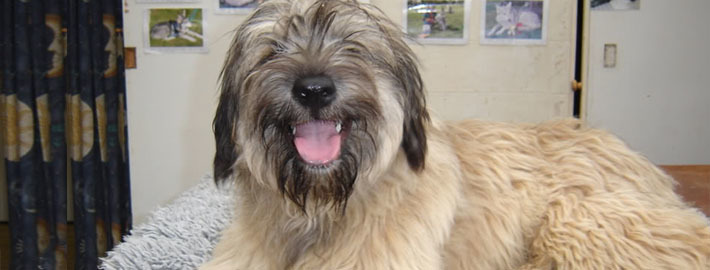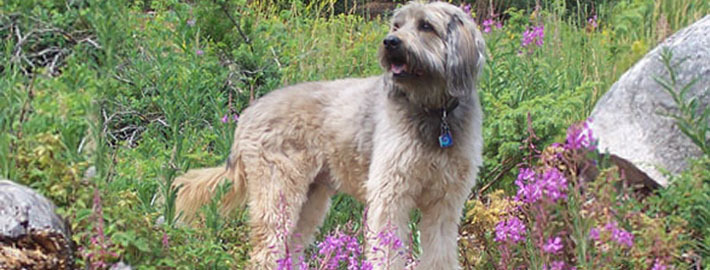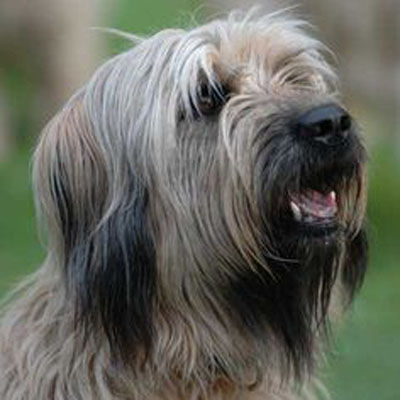What makes the Catalan Sheepdog Unique?
Catalonian Sheepdogs are heavy-duty outdoor dogs despite their cute looks. They make good household pets, but are still very close to their roots: They like to be outside herding something. Ideally, you will have a fenced-in yard and exercise your dog at least twice a day.
Breed Groups
Page Contents
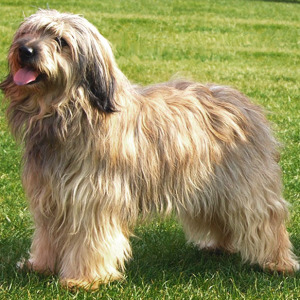
Is the Catalan Sheepdog Right For You?
In 5 Words
- Protective
- Agile
- Intelligent
- Trainable
- Courageous
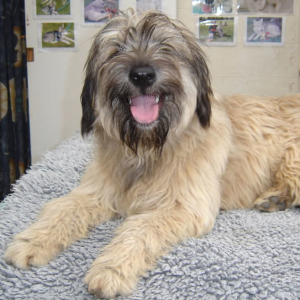
Characteristics
Learn About the Catalan Sheepdog
Description
The Catalan Sheepdog is a medium sized dog of balanced proportions, slightly longer than they are tall, muscular and solidly built. The head is strong and well proportioned to the rest of the body, slightly longer than it is wide with a straight and rather short muzzle. with strong jaws and a prominent nose. Its average-sized ears hang down the sides of its cheeks. The dog has a long tail that reaches its hocks. The dark amber eyes are round in shape. The coat color is a mixture of hair in various shades, including fawn, reddish-brown, gray, black, white, chestnut, yellow-red and sable.
Short History of the Catalan Sheepdog
The Catalan Sheepdog is an extremely ancient breed of dog whose origin dates back to the period of Roman Empire expansion. When the Roman conquerors arrived in the Iberian Peninsula around 200 to 100 B.C. they brought with them two types of dogs. One breed was used to defend and protect the Roman quarters, to tend their flocks of sheep as well as to help in attacking the enemies. The other, a dog with a lighter build was used to herd cattle. These dogs that were speculated to be the ancestors of the Italian Bergamasco were mated with the native Catalan dogs.
Presumably, the crossings resulted to the foundation of various breeds of dogs found these days in the different parts of Europe. Aside from the Catalan Sheepdogs, the other breeds are Portugal’s Ca de Serra d’Aires, the Briard of France, the Petit Berger of the Pyrenees, the Nizzins of Poland and Great Britain’s Bearded Collie and Old English sheepdog.After the 2nd World War, the dog’s population dramatically declined.
Some specimens were destroyed, others were rarely bred. Demographic movement is considered to be the major cause of population decline. During the 1950s and 1960s, a lot of farms were closed when people from the countryside moved into towns.. It is called the Gos d’Atura Català in the Catalan tongue, and known as the Perro de Pastor Catalán in the rest of Spain.
Temperament
These Catalan sheepdogs are a no nonsense breed. They can be quite mellow and enjoy lounging around on a lazy day, and other days they are all about herding or having a playful time. sheepdog is a hardworking breed. It enjoys being given a task to do. Primarily developed to herd and monitor sheep in Catalonia, this dogs can be depended upon to guard the sheep even without instructions from the farmer.
This brave, alert breed also makes an excellent guard dog. As a pet, he is loyal and gentle with children. This breed is well adapted to living outdoors.Excellent family dog. Alert, loyal and easily trainable. Can initially be wary of strangers.
Caring for Your Catalan Sheepdog
Grooming & Bathing
The long rough coat would not need extensive grooming but regular brushing would still be necessary. A comb or a firm bristled brush used three to four times a week would remove dead loose hair as well as prevent the formation of tangles. The dog may be bathed only when necessary so as not to remove the waterproofing of the coat.
Exercise & Training
Obedience training is helpful, but you may need special training to redirect its herding drive. Another trait seen sometimes is nervousness or extreme shyness. The breed is appropriate for people with firm techniques and who can give the dog enough exercise.

